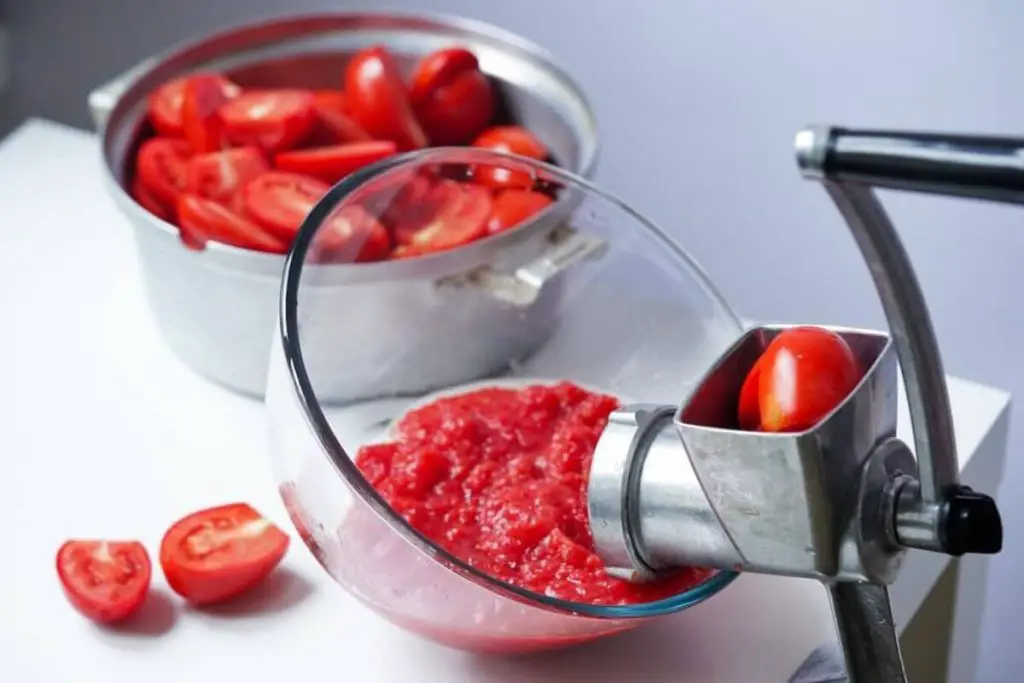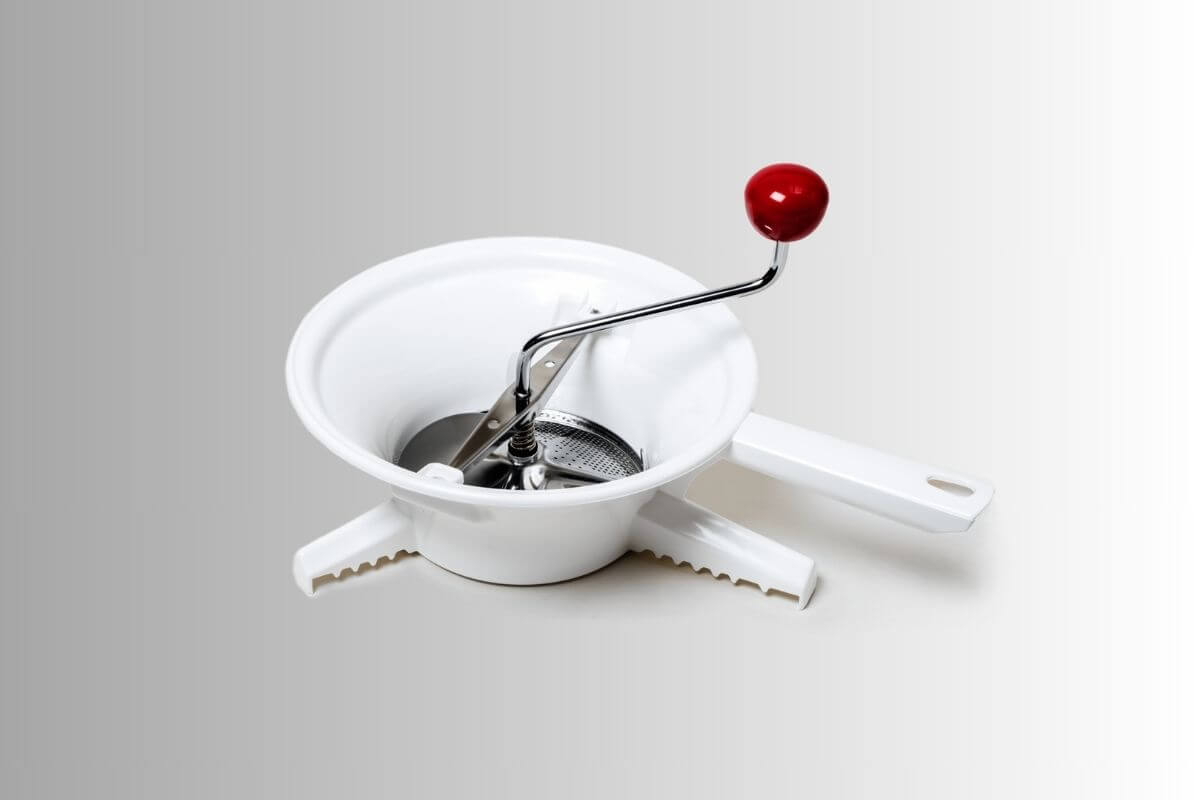Are you an avid cook or someone who loves preparing homemade sauces, soups, and purees? If so, you’ve probably encountered the dilemma of choosing between a tomato press and a food mill. These kitchen tools serve a similar purpose – turning fresh tomatoes into smooth, processed forms – but they have distinct differences that can greatly impact your culinary experience. In this article, we’ll delve into the debate of tomato press vs. food mill, comparing their features, benefits, and drawbacks, to help you make an informed decision for your kitchen arsenal.
Introduction
Tomato processing is a common task in the kitchen, whether you’re preparing pasta sauce or canning for the winter. Two popular tools that aid in this process are the tomato press and the food mill. Both tools are designed to extract the pulp and juice from tomatoes, but they do so in slightly different ways.
Understanding Tomato Press
A tomato press, also known as a tomato strainer or tomato squeezer, is a specialized kitchen gadget explicitly designed for processing tomatoes. It usually consists of a hopper, where you place the tomatoes, and a crank-operated mechanism that separates the skin and seeds from the pulp. This results in a smooth, seedless tomato puree that’s perfect for sauces and soups.

Exploring Food Mill
A food mill, on the other hand, is a versatile kitchen tool that can handle a variety of tasks beyond processing tomatoes. It features a hand-cranked mechanism similar to the tomato press but often comes with various interchangeable discs of different fineness levels. This allows you to customize the texture of your processed food, whether it’s tomatoes, fruits, vegetables, or even baby food.
Head-to-Head Comparison
4.1 Functionality and Use Cases
When it comes to functionality, the tomato press is a one-trick pony, excelling at turning tomatoes into smooth purees. The food mill, however, offers broader versatility, making it a go-to tool for multiple ingredients.
4.2 Texture and Consistency
The tomato press tends to produce a finer texture due to its design, while the food mill offers texture options. If you prefer a chunkier consistency, the food mill might be your best choice.
4.3 Efficiency and Speed
In terms of efficiency and speed, the tomato press usually takes the lead since it’s optimized for one specific task. However, the food mill’s versatility compensates for its slightly slower pace.
4.4 Cleaning and Maintenance
Both tools require cleaning after use, but the food mill’s interchangeable discs can add complexity. Tomato presses often have simpler mechanisms, making cleanup relatively straightforward.
Factors to Consider When Choosing
5.1 Recipe Requirements
Consider the types of dishes you frequently prepare. If tomato-based recipes dominate your menu, a tomato press might suffice. For broader applications, a food mill offers more flexibility.
5.2 Kitchen Space and Storage
Evaluate your kitchen space. Tomato presses tend to be more compact, while food mills might require additional storage for their interchangeable parts.
5.3 Budget and Longevity
Tomato presses are often more budget-friendly, but a well-built food mill can last longer and serve multiple purposes.
Expert Tips for Optimal Results
To get the most out of your chosen tool, follow these tips:
- Lubricate moving parts to ensure smooth operation.
- Remove excess seeds and skin before processing for better results.
- Alternate between clockwise and counterclockwise cranking for even processing.
Pros and Cons of Tomato Press
7.1 Pros
- Designed specifically for tomatoes
- Efficient and speedy operation
- Minimal parts for straightforward cleaning
7.2 Cons
- Limited functionality
- May not handle other ingredients as effectively
Pros and Cons of Food Mill
8.1 Pros
- Versatile for various foods
- Customizable textures with interchangeable discs
- Offers more value due to broader functionality
8.2 Cons
- Slightly slower processing than tomato press
- Additional parts to clean and maintain
Making Your Decision
In the end, the choice between a tomato press and a food mill boils down to your cooking habits, preferences, and the variety of dishes you create. If tomatoes are the star of your culinary show and you value efficiency, a tomato press might be your ideal pick. On the other hand, if you seek culinary versatility and are open to experimenting with different textures, a food mill could become your kitchen ally.
Conclusion
Whether you opt for the specialized efficiency of a tomato press or the multi-purpose functionality of a food mill, both tools offer unique advantages for home cooks and chefs alike. By understanding their features and weighing your culinary needs, you can confidently choose the tool that will elevate your tomato-based creations to new heights.
FAQs
11.1 Is a tomato press suitable for other fruits as well?
While designed for tomatoes, a tomato press can work with other soft fruits like berries and grapes. However, its efficiency might vary based on the fruit’s texture.
11.2 Can I use a food mill for non-food purposes?
It’s recommended to use kitchen tools only for their intended purposes to ensure their longevity and optimal performance. Avoid using a food mill for non-food tasks.
11.3 Which option is more cost-effective in the long run?
While a tomato press might be cheaper upfront, a food mill’s versatility can provide more value over time due to its ability to process various foods.
11.4 Can I achieve different textures using these tools?
Yes, a food mill’s interchangeable discs allow you to achieve various textures, from smooth purees to chunkier consistencies. A tomato press typically produces smoother results.
11.5 Where can I buy reliable tomato presses or food mills?
You can find these kitchen tools in home goods stores, kitchenware specialty shops, and online retailers. Look for well-known brands with positive customer reviews for reliable options.




